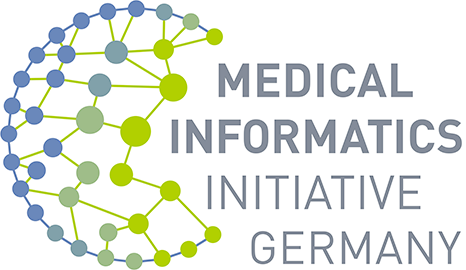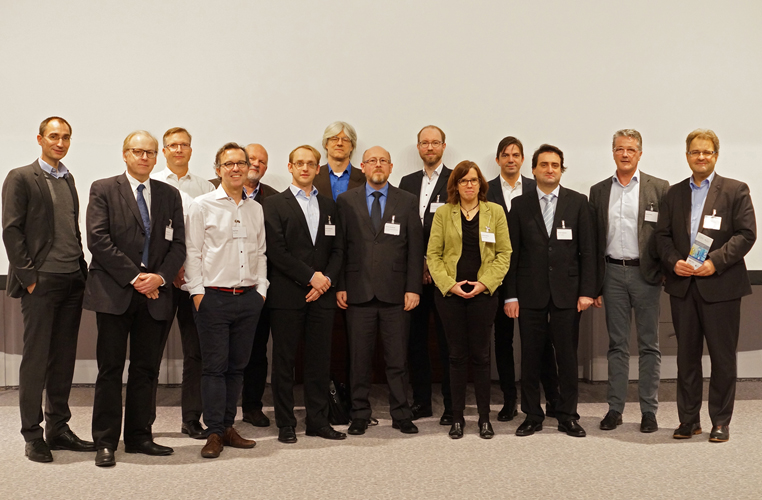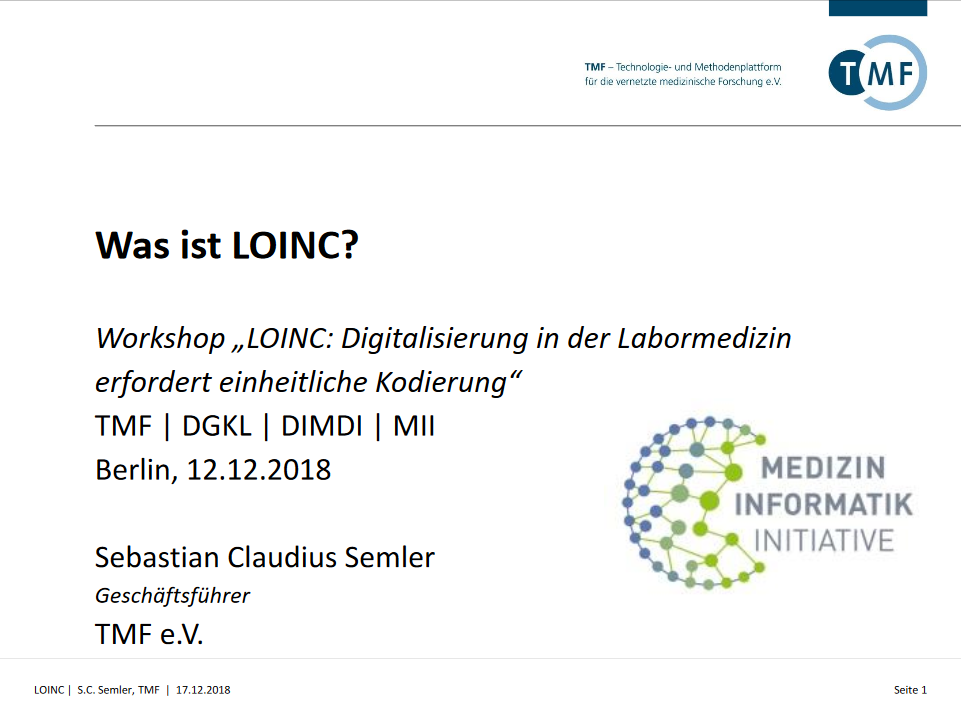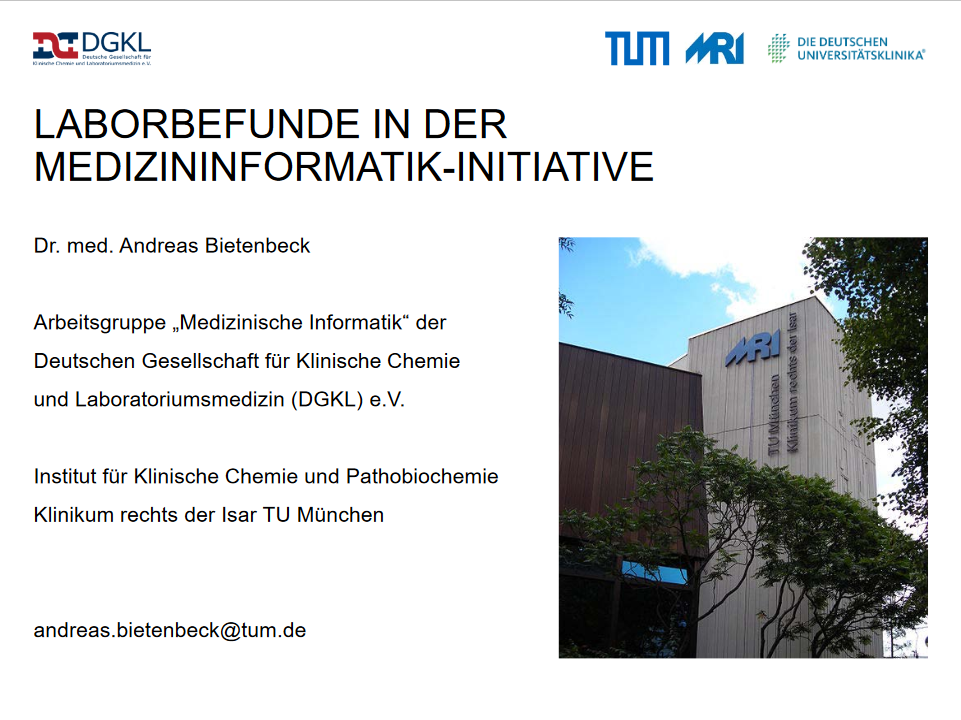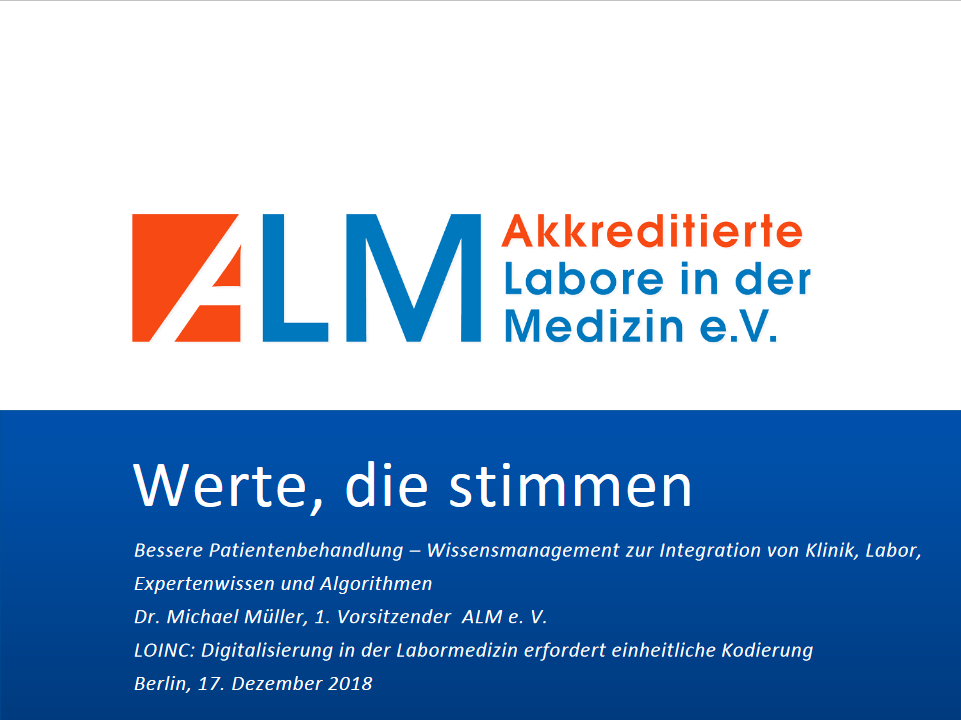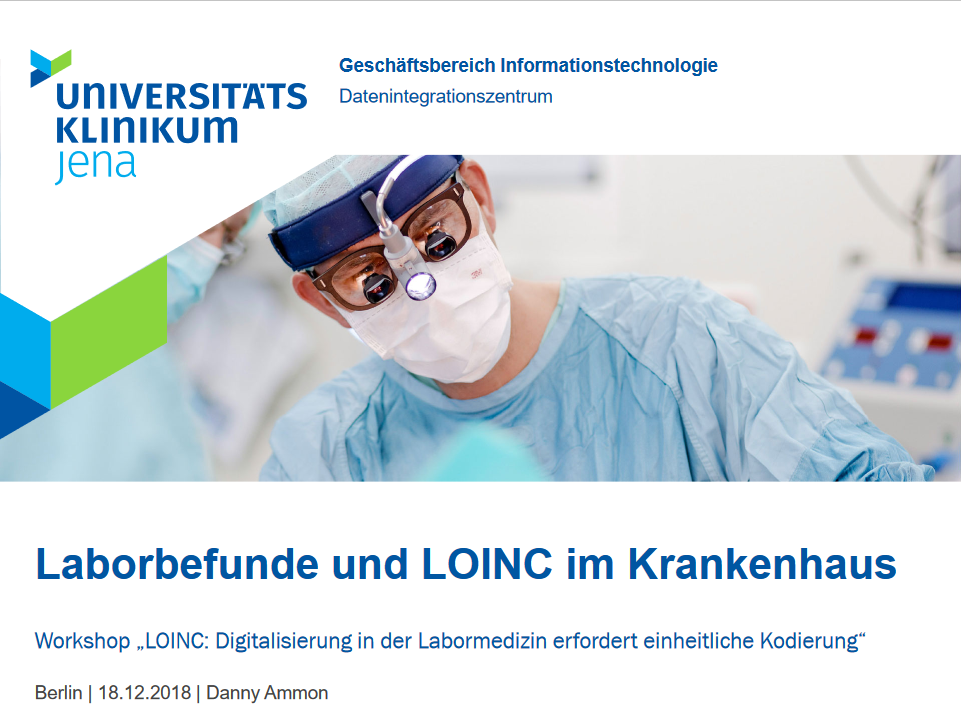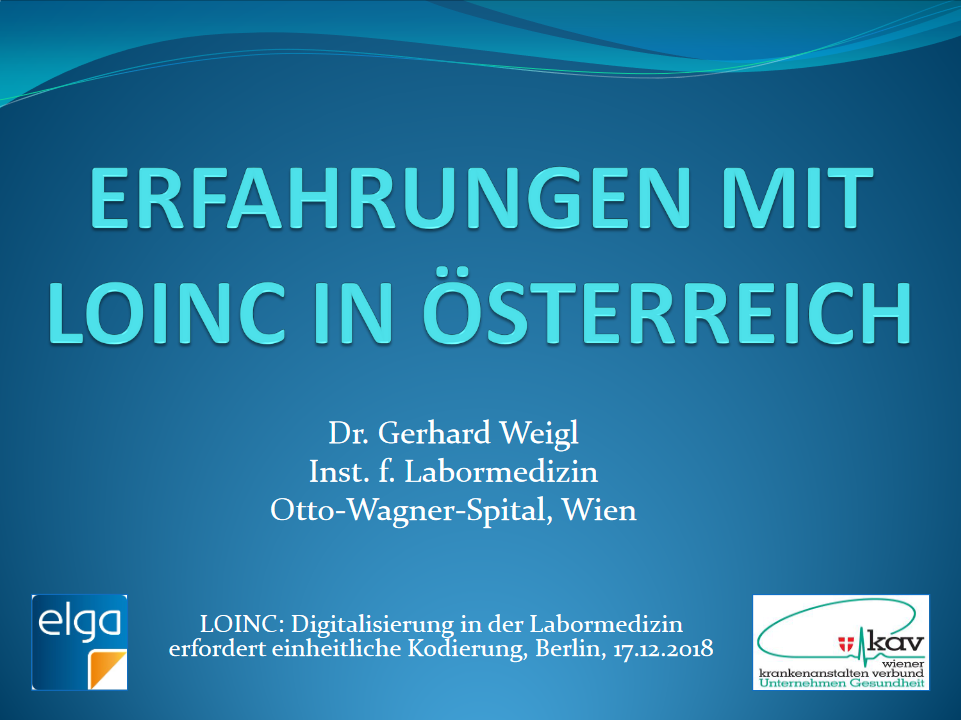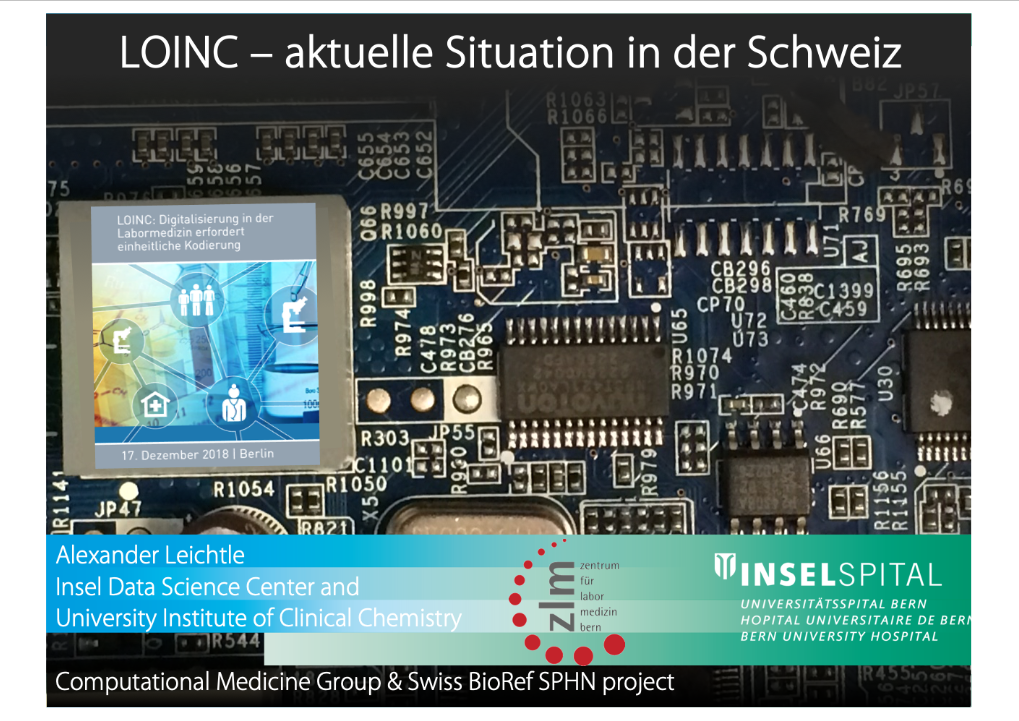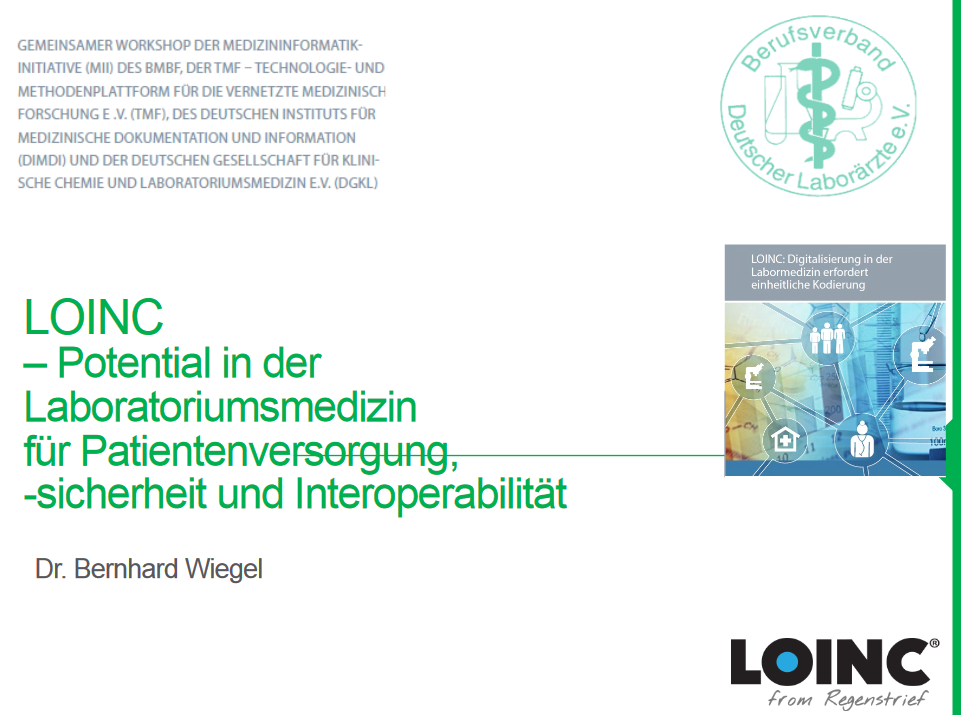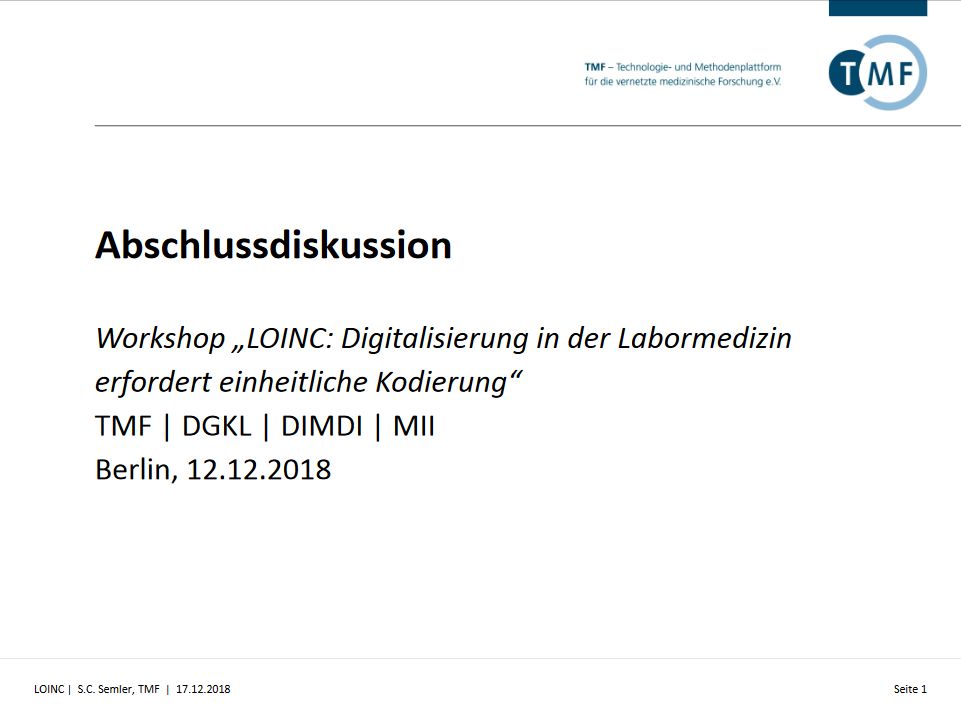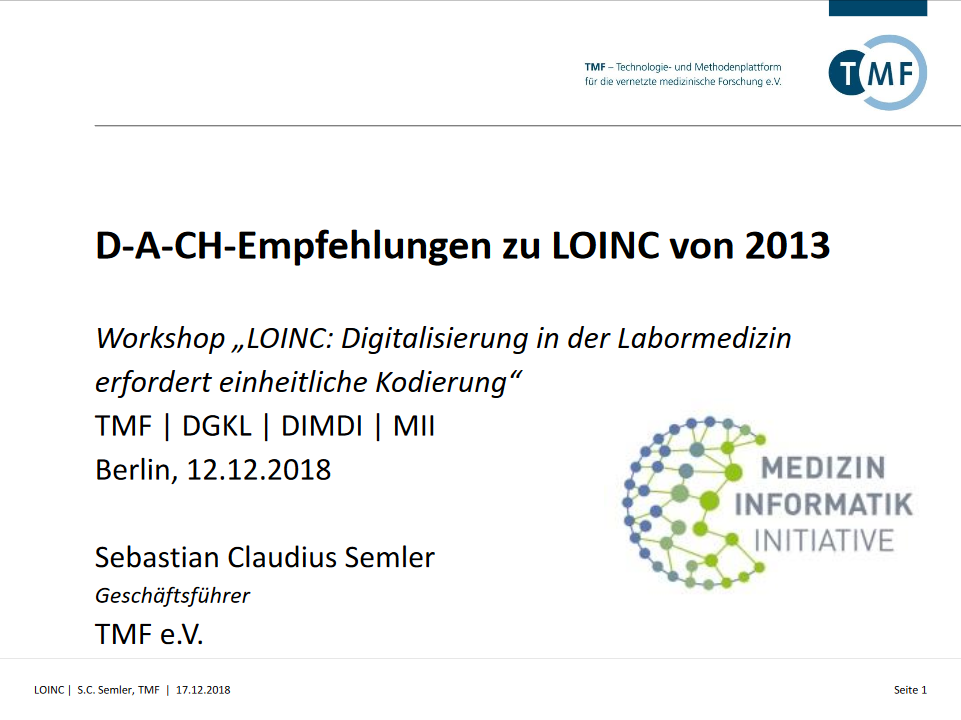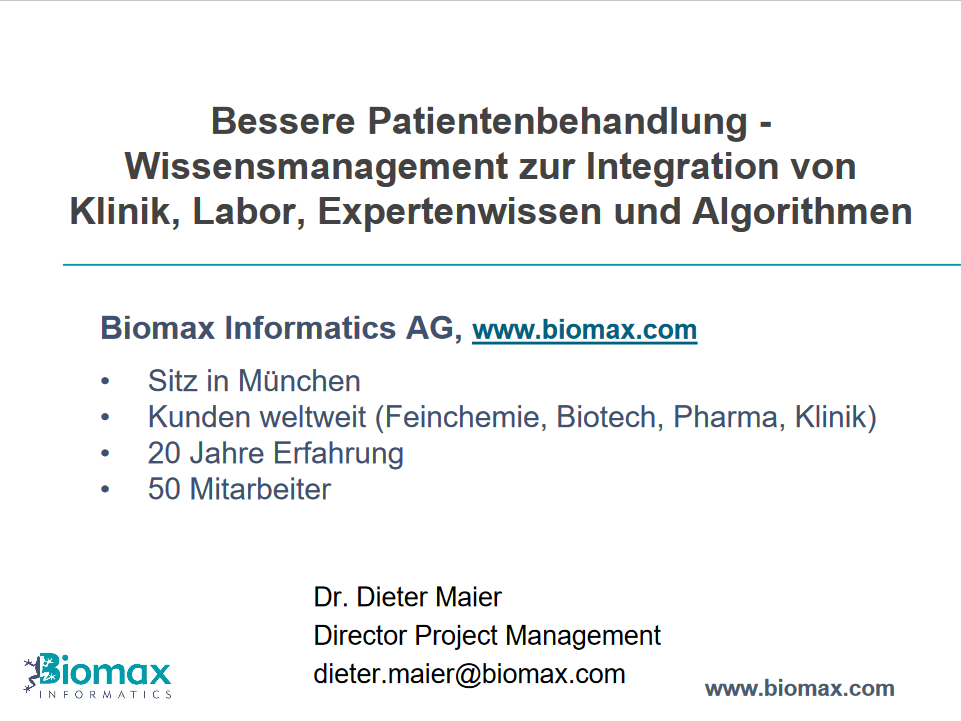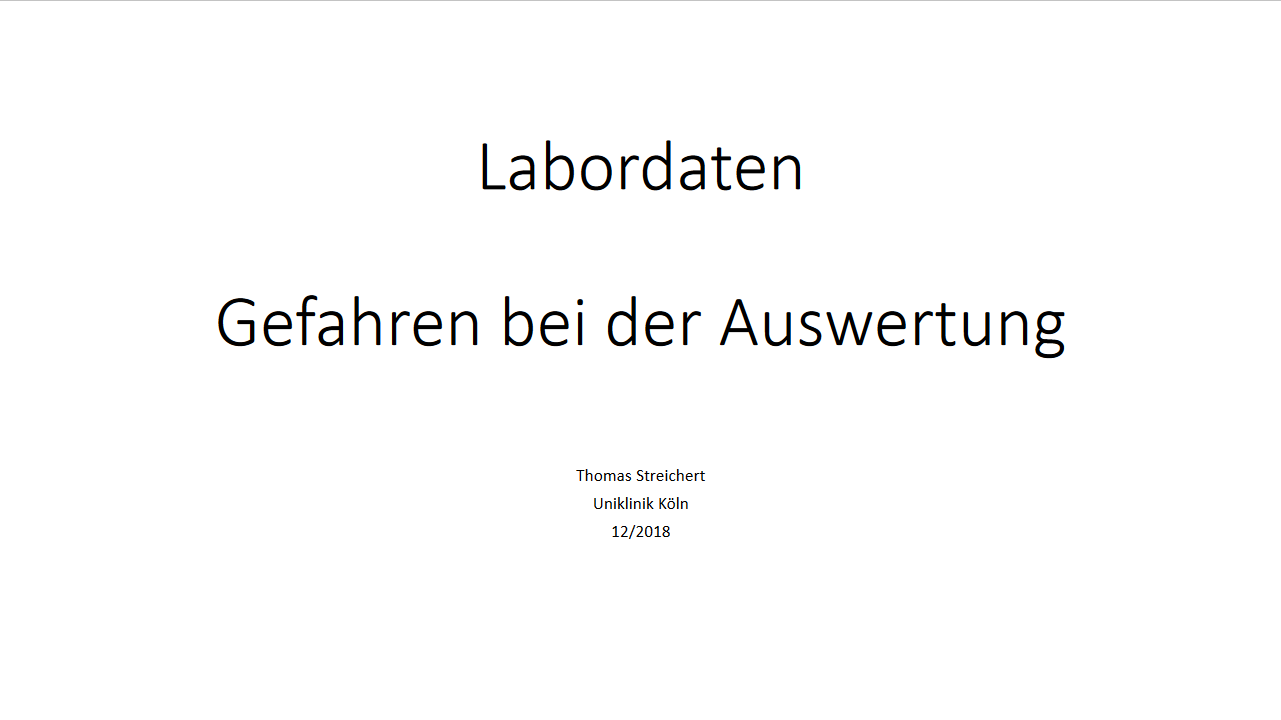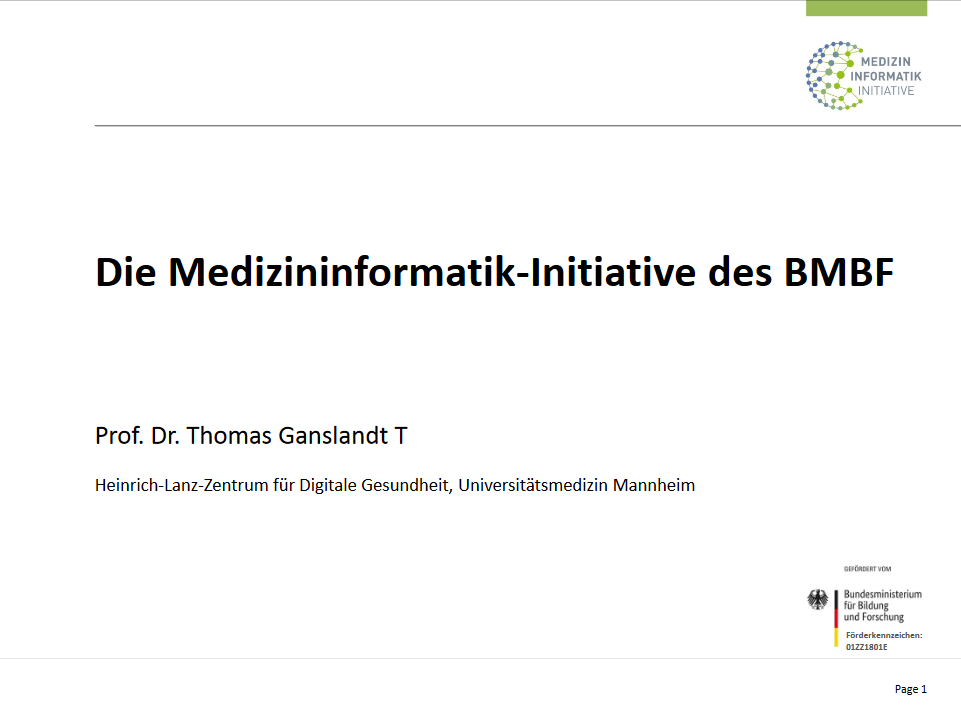18 December 2018. Over 100 experts, including researchers, medical professionals and industry players, met in Berlin with German political and healthcare representatives. At the workshop, they discussed the potential LOINC-coded laboratory data have in the context of the digital transformation of healthcare. The full-day event was held on 17 December 2018 under the aegis of the Medical Informatics Initiative (MII). It was organised by the German Society for Clinical Chemistry and Laboratory Medicine (DGKL), the German Institute of Medical Documentation and Information (DIMDI), and Technology, Methods and Infrastructure for Networked Medical Research (TMF), with the involvement of relevant professional associations and other stakeholders.
Logical Observation Identifiers Names and Codes (LOINC) is a common terminology for the electronic coding and digital exchange of medical laboratory observations and results. Making the information derived from these results available – rapidly and accurately in electronic form – primarily benefits patients. In addition, researchers hope to gain new insights through an improved basis for analytics. Moreover, the healthcare system overall can avoid unnecessary repeat examinations and tests. In Germany, the Federal Ministry of Education and Research’s (BMBF) Medical Informatics Initiative (MII) is providing fresh impetus for wide-scale usage of LOINC. A top 300 set of LOINC codes has been defined within the scope of MII. University hospitals are to use this to complete the first step of LOINC-based data coding by late 2019. The set may be expanded in future in line with the needs of clinical use cases.
Against this background, Sebastian Claudius Semler, Executive Director of TMF, spotlighted the opportunities created by systematic digitisation of healthcare. “The exchange of high-quality digital data between research and healthcare is vital to realising the full potential of integrated medical research and patient care. Laboratory data are as valuable for medical research as they are for outpatient and inpatient care. LOINC is a comparatively simple way of commencing standardisation of these data, without incurring costs for licensing – and it is already established internationally. However, we have made only limited progress since we first implemented LOINC at a hospital in 2001.” Consequently, the workshop’s call for more widespread usage of LOINC terminology in labs is significant – especially for the successful introduction of research-compatible electronic patient records, emphasised Semler.
Workshop attendees agreed that politicians should provide timely support for the digital exchange of laboratory data – i.e. by defining statutory deadlines, creating corresponding incentives, and establishing suitable, authorised organisational structures for coordination, and moderation processes.
The workshop not only highlighted the advantages of LOINC coding, it also pointed out LOINC’s limitations. As Dr Thomas Streichert of University Hospital Cologne explained, laboratory results must be evaluated in the context of the test method employed. Moreover, analysis requires measurements to be made under consistent conditions, plus unambiguous information on the parameters being studied. This means LOINC coding alone is not sufficient when it comes to interpreting lab findings: further information must be available – such as what measurement system and unit are being used, plus the time-stamp and patient-related data. Additionally, unique device identification (UDI) information, such as the device manufacturer, version/model and test batch number, plus quality-control information, should be included with the analysis data. Workshop attendees also noted the need to provide diagnostics annotations. Above all, the availability of SNOMED CT terminology at national level is key to standardised data exchange across research and healthcare.
Professor Thomas Ganslandt, chairperson of the interoperability working group of the Medical Informatics Initiative called for early mapping – i.e. that LOINC should already be in use in source systems. Furthermore, Dr Andreas Bietenbeck, chairperson of the DGKL medical informatics working group, argued for greatest-possible incorporation of LOINC codes into the exchange of structured lab result data. “A learning healthcare system requires widespread application of international standards. At the same time, we have to ensure that transfer of laboratory results does not lead to the loss of any meaningful content. Moreover, data exchange cannot be a one-way street: just as LOINC-coded lab data form a vital basis for the work of other healthcare actors, the labs themselves require reliably high-quality digital data on medication administration records and diagnoses, for example.”
Dr Stefanie Weber, responsible for medical vocabularies, i.e. medical terminology systems, at DIMDI, was struck by the positive response of attendees and the results of the workshop. “At DIMDI, we are in ongoing contact with experts with regard to suitable semantics standards for the electronic exchange of healthcare data. The great interest shown at the workshop confirms that we are right in our assessment that LOINC-coded lab data could be of cross-domain importance. The comments and requirements voiced by the workshop attendees will play a significant role in our further considerations.”
Following the workshop, the next step undertaken by DGKL, DIMDI and TMF will be to institutionalise dialogue with additional actors in order to further strengthen cross-domain coordination of the introduction of LOINC in Germany. It is important to involve all stakeholders from an early stage – not just research, healthcare, informatics and laboratory medicine (clinical pathology), but also healthcare industry players, particularly manufacturers of information systems for laboratories, medical practices and hospitals.
Background
The aim of the Medical Informatics Initiative (MII) is to enhance research and patient care through innovative IT solutions. These will enable the sharing and use of data from healthcare and from clinical and biomedical research across multiple entities and sites. The German Federal Ministry of Education and Research (BMBF) is investing a total of 150 million euros in the initiative through 2021. Within the scope of four consortia – DIFUTURE, HiGHmed, MIRACUM and SMITH – nearly all German university hospitals and medical centres at over 30 locations are cooperating with research institutions, businesses, health insurers and patient representatives. Their mission is to enable the use of research findings to the direct benefit of patients. At the same time, priority is given to robust data protection and security.
The Berlin-based coordination office, operated by TMF (Technology, Methods and Infrastructure for Networked Medical Research) with MFT (German Association of Medical Faculties) and VUD (German Association of Academic Medical Centers), is responsible for managing cooperation within MII at national level.
